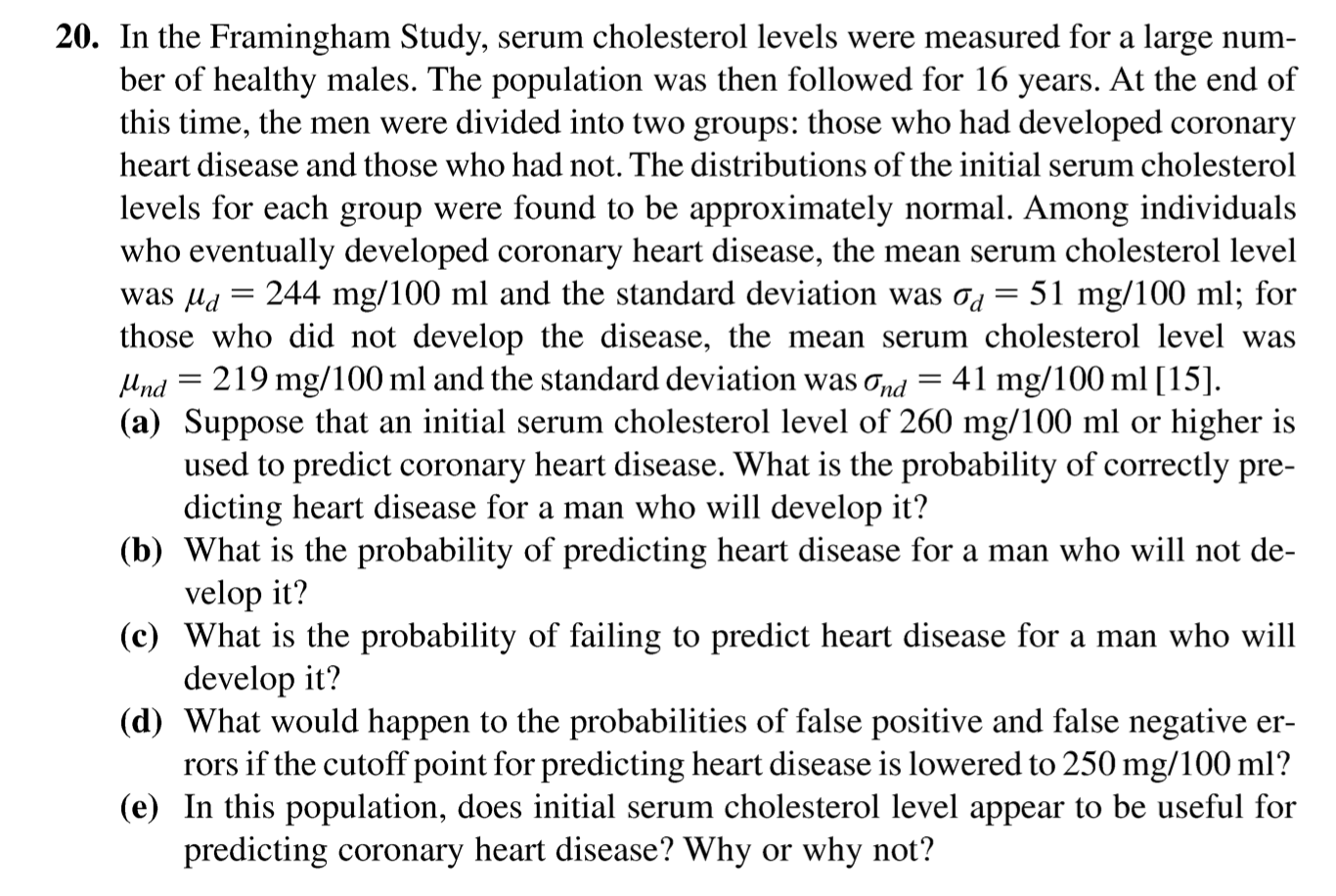Home /
Expert Answers /
Statistics and Probability /
0-in-the-framingham-study-serum-cholesterol-levels-were-measured-for-a-large-number-of-healthy-ma-pa490
(Solved): 0. In the Framingham Study, serum cholesterol levels were measured for a large number of healthy ma ...

0. In the Framingham Study, serum cholesterol levels were measured for a large number of healthy males. The population was then followed for 16 years. At the end of this time, the men were divided into two groups: those who had developed coronary heart disease and those who had not. The distributions of the initial serum cholesterol levels for each group were found to be approximately normal. Among individuals who eventually developed coronary heart disease, the mean serum cholesterol level was and the standard deviation was ; for those who did not develop the disease, the mean serum cholesterol level was and the standard deviation was [15]. (a) Suppose that an initial serum cholesterol level of or higher is used to predict coronary heart disease. What is the probability of correctly predicting heart disease for a man who will develop it? (b) What is the probability of predicting heart disease for a man who will not develop it? (c) What is the probability of failing to predict heart disease for a man who will develop it? (d) What would happen to the probabilities of false positive and false negative errors if the cutoff point for predicting heart disease is lowered to ? (e) In this population, does initial serum cholesterol level appear to be useful for predicting coronary heart disease? Why or why not?